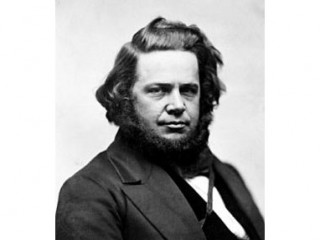
Elias Howe biography
Date of birth : 1819-07-09
Date of death : 1867-10-03
Birthplace : Spencer, Massachusetts, U.S.
Nationality : American
Category : Arhitecture and Engineering
Last modified : 2011-03-19
Credited as : Inventor, first working sewing machine, Singer
Elias Howe, American inventor, is credited with designing the first workable sewing machine, an invention which revolutionized garment and shoe manufacture.
Elias Howe was born in Spencer, Mass., where his father operated a gristmill and sawmill. In 1835 Elias was apprenticed to a manufacturer of cotton machinery in Lowell, Mass. Two years later he worked briefly in a machine shop in Cambridge, then apprenticed himself in Boston to a maker of watches and scientific instruments.
While working in this shop, Howe is said to have overheard the owner discussing the need for, and problems involved in making, a sewing machine. By 1844 Howe himself began trying to build a workable model. Even though he had acquired a family, he quit his job and, with financial support from his father, worked full-time on the invention. Later he was able to take in a partner, who provided more capital.
Howe had a sewing machine working as early as April 1845, and in September 1846 he obtained a U.S. patent for his second machine. One key to his success was the placement of the eye of the needle near the point, rather than at the opposite end as in a regular needle. Howe sent his brother to England to seek a market and there sold his third machine to a manufacturer of corsets, umbrellas, and shoes. This manufacturer saw the possibilities the sewing machine would have if it could be redesigned to sew leather for shoes. He asked Howe to come to England to work on the problem. The two soon quarreled, however, and Howe was forced to pawn his model and the patent papers to raise enough money to return home.
Upon his return Howe discovered that several manufacturers were developing a market in America for sewing machines. This appeared to infringe his patent. In a lawsuit that lasted from 1849 to 1854, he finally vindicated his claims to originality and priority and was able to extract a license fee for each machine produced by his rivals. At the height of his prosperity Howe received as much as $4, 000 a week in royalties.
Howe's new wealth was but one measure of the success of the sewing machine. Within the decade of the 1850s it became a major trade item. In 1860 some 110, 000 sewing machines were manufactured. In turn, there was a rise in the number of ready-to-wear garments. The sewing machine was applied to shoemaking with the same results.
















